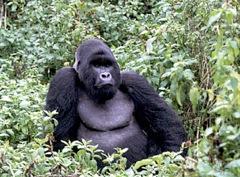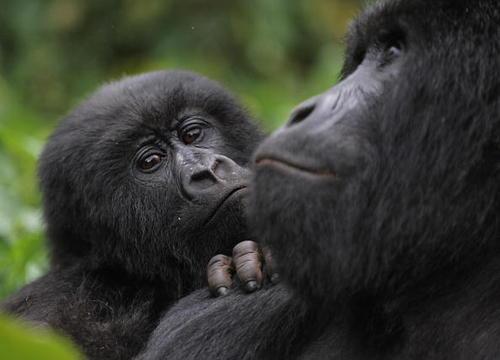When I was about eleven my father gave me James Ramsey Ullman’s book High Conquest. This was Ullman’s romantic and occasionally inaccurate account of the history of mountain climbing, published in 1941. I was fascinated by the fact that Everest, the highest mountain in the world, had not yet been climbed. But what made the most impression on me were the Mountains of the Moon, a range on the border between Uganda and the Democratic Republic of Congo—then the Belgian Congo. I was struck by how difficult they were to access, and by the fact that although they were on the equator, they were covered with snow. Two officers in Henry Stanley’s 1887 expedition to East Africa were the first Europeans to see them; Stanley named the range “Ruwenzori,” an anglicized version of the Rukonjo name “Rwenjura” meaning “hill of rain.”
Of rain there is plenty, and the mountains are rarely visible from below. The first proper climbing expedition in 1906 was led by Prince Luigi Amedeo Giuseppe Maria Ferdinando Francesco, Duke of the Abruzzi, one of the greatest climbers who ever lived. The Duke and his people climbed and named all the major peaks. For Amadeo, the biggest challenge about these mountains was not in the climbing, but in slogging through horrible mud-covered bogs to get to them. At the time it sounded wonderful to me and I decided that someday I would go. It took until 1989 before I got there.

I was with a small group of French climbers. I had done enough study of the mountains to realize that the climbing itself would be over my head, but that I could trek to the base of the glacier from which the ascent began. But first we had to get there. We flew from Brussels to Kigali, Rwanda, and then by mini-bus to the Congolese frontier. What little I saw of Rwanda’s forested hills impressed me. Of the ethnic tensions that would lead to its terrible genocide five years later I had no inkling. We crossed into eastern Congo and took another mini-bus to Goma to spend the night. In recent years, Gomo too has been swept up in the horrific violence of East Africa. Then we got on a Japanese mini-bus for a three day trip to Mutwanga where the trek into the mountains began. The bus trip was a nightmare of bad roads and breakdowns. But at Mutwanga we got a rare view of the mountains, and then began the three-day trek that would take us to our base camp. It was just as hard as Ullman had described. The bogs were awful and some of the terrain was so steep that one had to use a fixed rope. But the base camp was beautiful; it was on the shore of a small lake with the mountains looming over it.

The next day my companions did their climbing while I explored the terrain below. Afterward, we headed down to visit the mountain gorillas, a rare subspecies of Eastern Gorilla that is found only in national parks in Rwanda, Uganda, and the Democratic Republic of Congo. Nowadays, it is estimated that there are about 700 left. The group in Rwanda was made famous by the American zoologist Dian Fossey, who was murdered by poachers. We chose to visit the group that is in the Virunga mountains in Congo. A visit to Virunga National Park had to be reserved months in advance and we had been warned that if we showed up late we would lose our place; we hiked up a grassy hill to the park headquarters arriving just in time. We were assigned a tracker and an assistant with a rifle, perhaps to protect us from animal attack, and led along a broad path for about an hour. Then without explanation the tracker headed into the jungle, hacking his way through the vegetation to cut a path. This went on for at least another hour. I thought he would tell us that he had tried but the gorillas had gone and that we should come back another time. Then he stopped, put his hand to his lips, and pointed up. There in a tree a few feet above us was the most remarkable animal I have ever seen.

He was enormous, but he didn’t seem menacing. He studied us with seeming indifference. Why were we there? Why were we looking at him? We moved on and found ourselves in a small cluster of gorillas. The young ones rushed around and brushed up against us. Their mothers watched cautiously. And then something happened that continues to haunt me. There was a mother with a baby. We stopped to look and she held it up for us to see.
Advertisement
Today, I don’t know how much time is left for these animals. Virunga National Park is situated at the very center of the conflict in eastern Congo: rebel groups hide in its hills and smuggle weapons over the border with Rwanda. In 2008, seven gorillas were shot—it’s likely that they were eaten by rebel soldiers—and at one point, the park rangers were driven away by the fighting. Last year, some rangers were able to return and the park reopened to tourists, but without international help the mountain gorillas at Virunga may disappear forever. The Wildlife Conservation Society seems to be one of the few outside groups trying to save them.


